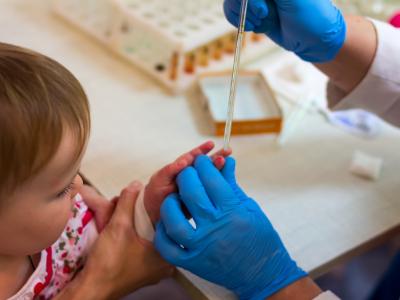White children treated at pediatric emergency departments (PEDs) are more likely to receive antibiotics for viral respiratory infections than black or Hispanic children, according to new research today in Pediatrics.
In a study of more than 39,000 patient encounters at seven PEDs in 2013, researchers found that 2.6% of children diagnosed as having a viral acute respiratory infection (ARTI) were treated with antibiotics, a lower number than has been reported in previous studies. But a breakdown by race and ethnicity revealed that 4.3% of non-Hispanic white children received antibiotics, compared with 1.9% of non-Hispanic black children, 2.6% of Hispanic children, and 2.9% of other non-Hispanic children. The median age of the patients was 3.3 years.
In a multivariable analysis that adjusted for factors such as age, insurance status, and provider type, white children had 1.5 to 2 times higher odds of being treated with antibiotics than Hispanic and black children, respectively.
The authors of the study say it's encouraging that the percentage of children who received antibiotics for viral ARTIs was low, since viral respiratory infections are a significant driver of antibiotic prescribing in children and adults despite being medically inappropriate. Nationally, there are more than 70,000 antibiotic prescriptions a year for viral ARTIs diagnosed in emergency departments. They credit the results in part to the fact that pediatricians tend to have lower rates of antibiotic prescribing for viral ARTIs than other specialties.
But what's concerning is that even though the black and Hispanic children in the study were more likely to receive medically appropriate and evidence-based care, the racial disparities observed in prescribing are another sign that minority children in the United States are treated differently in pediatric settings, including the emergency department.
"Unfortunately, today's results provide further evidence of racial and ethnic differences in providing health care in the ED setting," lead author Monika Goyal, MD, MSCE, director of research in the division of emergency medicine at Children's National Health System, said in a press release.
The role of implicit bias
Goyal and her colleagues write that the results of their study are consistent with a growing body of evidence that indicates white children are more likely than black or Hispanic children to receive unnecessary medical assessments and interventions in PEDS. In one study they cite, researchers found that white children with minor blunt head trauma and low risk of severe brain injury were more likely to undergo cranial computed tomography scans than similarly injured black and Hispanic children. In another study, both crude and severity-adjusted hospital admission rates for black and Hispanic children were lower than for white children.
Although the Pediatrics study did not explore the reasons for the racial disparities in antibiotic prescribing, Goyal and her colleagues suggest a few potential explanations. They include race- and ethnicity-specific differences in parental expectations of antibiotics, differences in the way clinicians perceive parental pressure for antibiotics and how they respond, and implicit bias. They say further investigation into these factors is critical to help reduce racial disparities.
Marvin Harper, MD, a physician in the emergency medicine department at Boston Children's Hospital and author of an accompanying commentary, makes the case that implicit bias—the unconscious attitudes or stereotypes that can negatively affect individuals' understanding and actions—plays a significant role in these disparities and is linked to how clinicians respond to parental pressure. While a clinician might not demonstrate an explicit bias against black or Hispanic pediatric patients, their implicit bias may make them more likely to respond to the concerns of a white parent and consequently provide more care, even if it's not clinically indicated.
Results like the ones presented in this study, Harper says, should no longer come as a shock.
"We must recognize that we are biased in our treatment of patients," Harper writes. "This does not mean we accept this fact. We should strive to provide care in our clinics and emergency departments that is of high quality, evidence-based, consistent across providers, and free from bias, implicit or explicit."
Although implicit bias is an issue throughout society, increasing attention is being paid to how it plays out in healthcare settings. In another study cited by the authors, parents of minority children were less likely than parents of white children to say that physicians and nurses communicated well, that they received needed care and advice, and that physicians spent enough time with their children.
Harper argues that the next step to reducing racial disparities in healthcare is to study how implicit bias, and its role in medical decision-making, can be altered at the provider level.
See also:
Sep 5 Pediatrics study
Sep 5 Pediatrics commentary
Sep 5 Children's National Health System press release






















